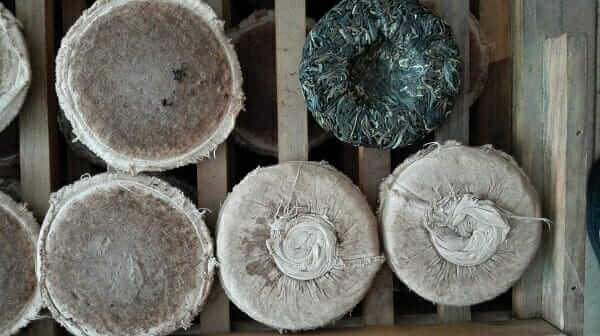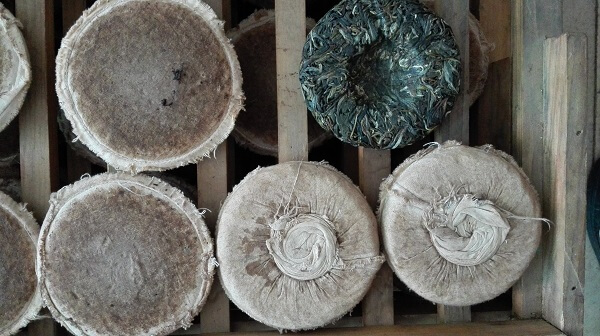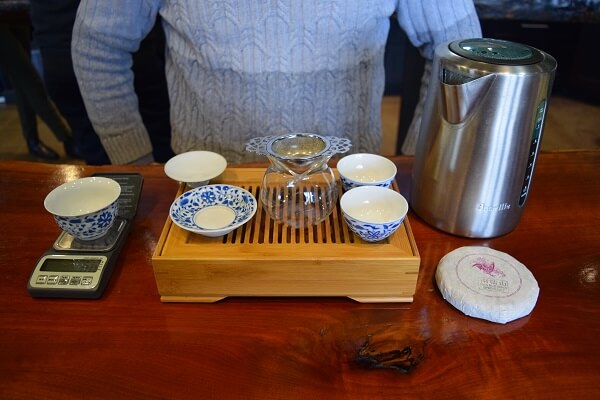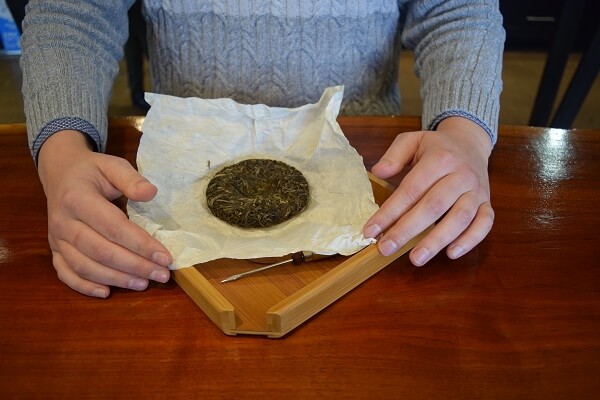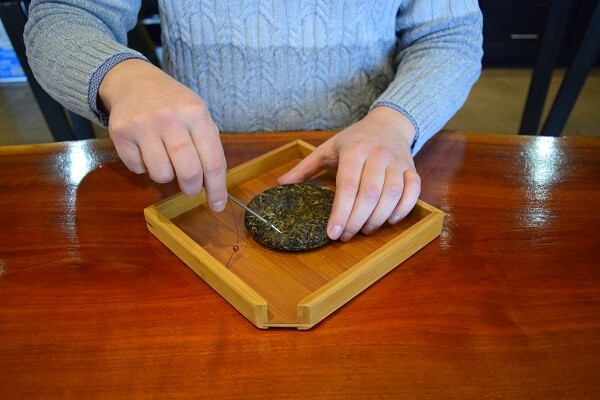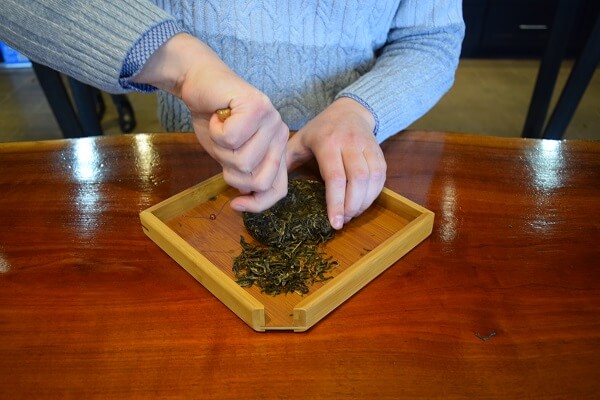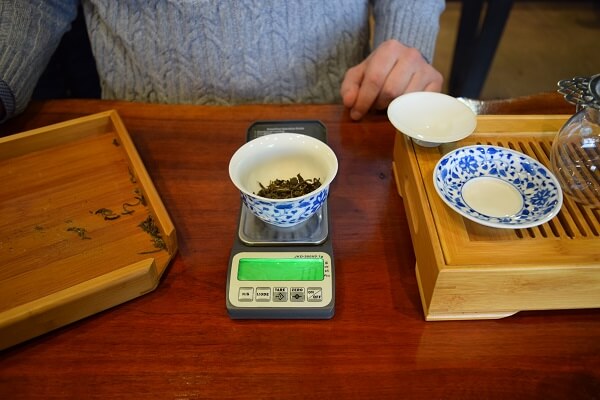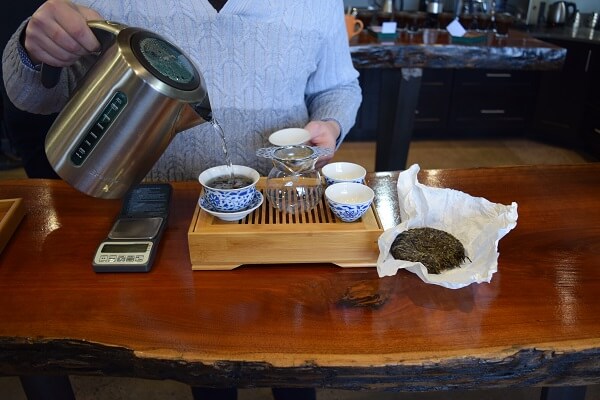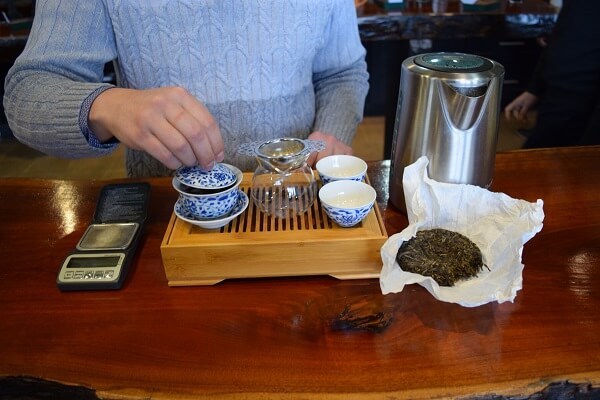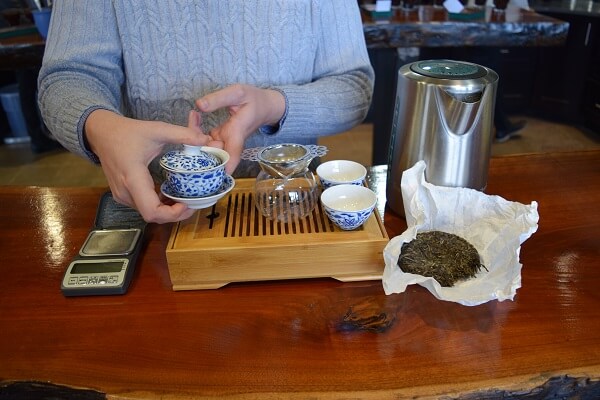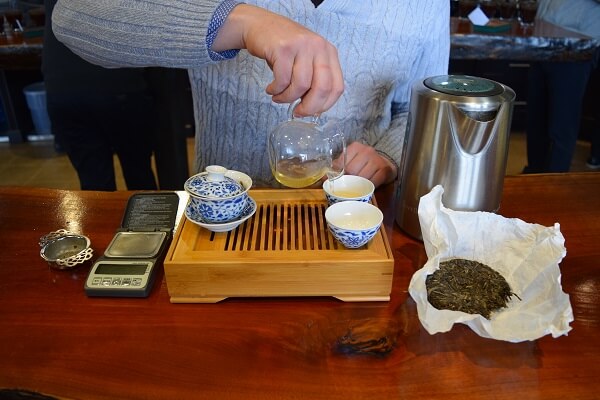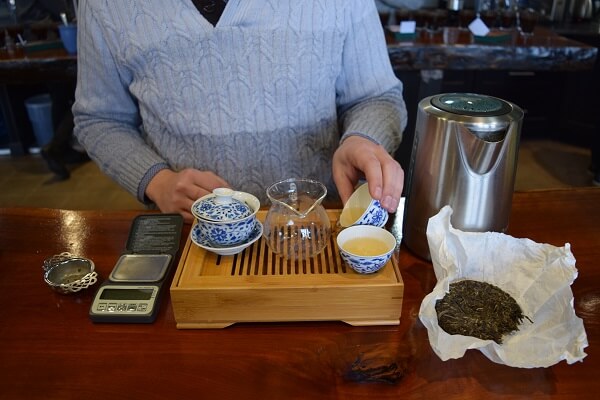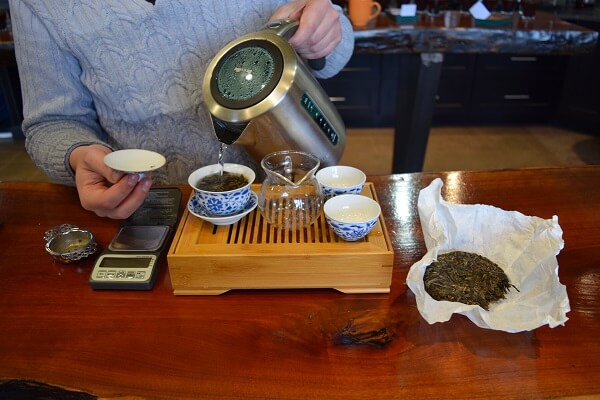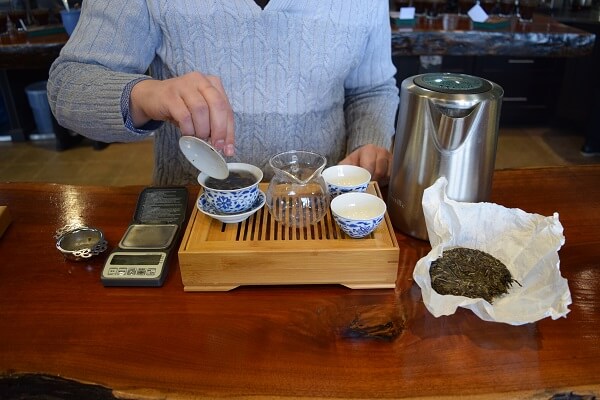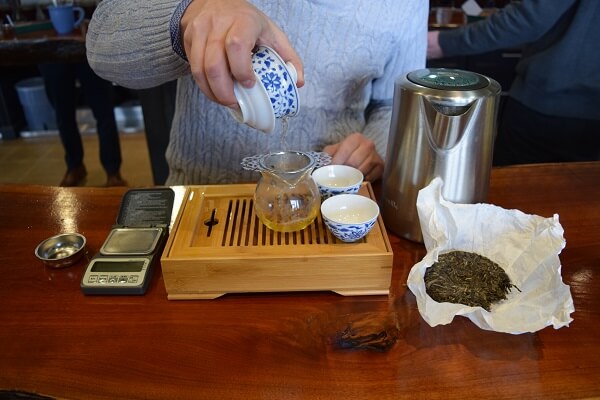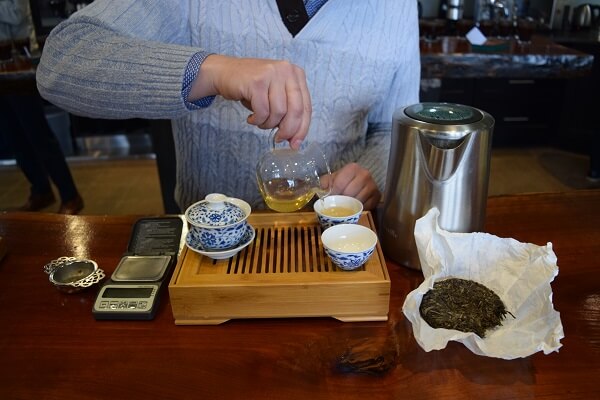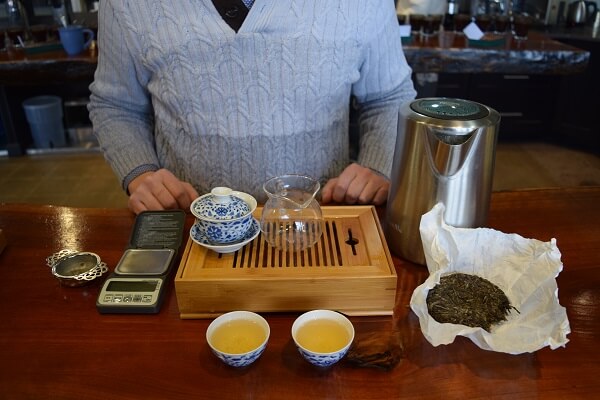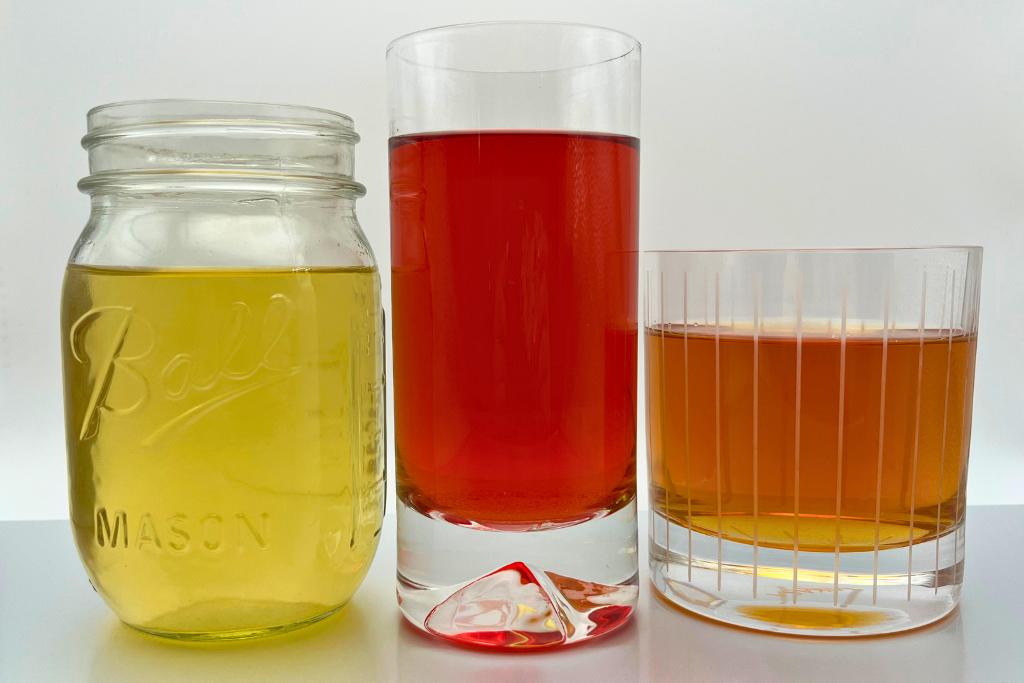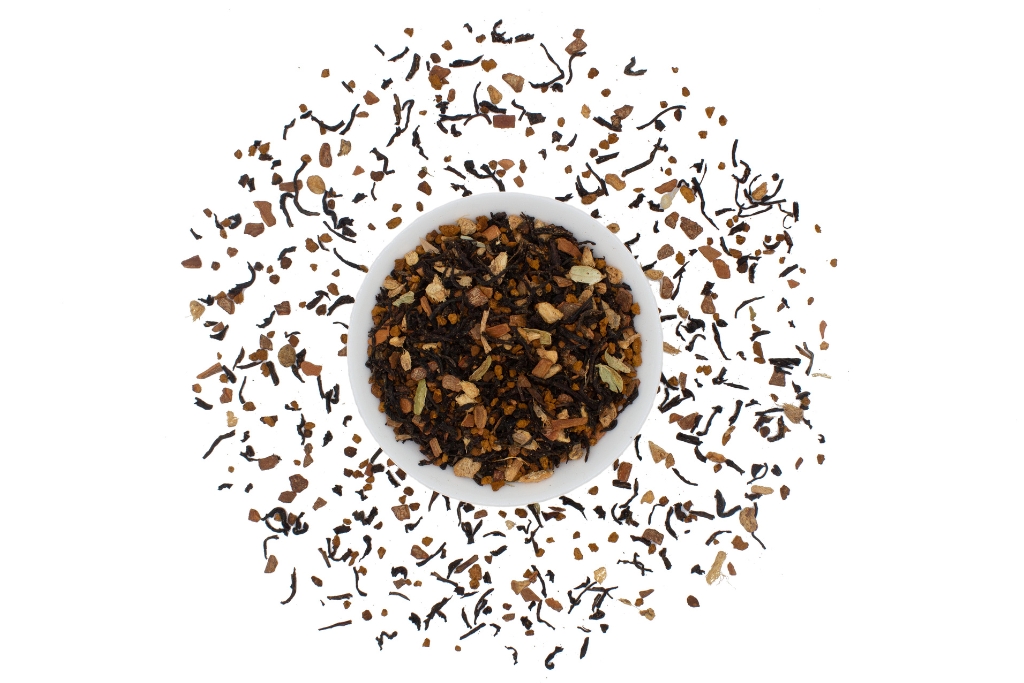What is Puer Tea?
Ever see a puer cake and wonder how to brew puer tea? In this article, our tea traders introduce you to puer and teach you how to brew it!
Puer, fermented Chinese tea, has a long and complex history. From acting as a principle trading good on the ancient horse roads to its modern incarnation as a globally embraced hobby, this tea variety offers a wide array of flavor profiles. The tasting notes in puer can be affected by several factors, including terroir, processing, storage and age.
History of Puer
Typically sourced from Yunnan Province, China, there are two main processing styles: raw (sheng) and ripe (shou). Sheng puer is either stored and consumed as Maocha or they press it into a shape, usually in the form of a cake or brick. For pressing the tea, the leaves need to be malleable. First, they are weighed out into a form and steamed. After an initial steam, they are put into a cloth, placed back in to the form and then re-steamed. The tea is then pressed either under large stone forms or by hydraulic press. The pressed tea is then set out to dry. Once the desired moisture level is reached, the Puer is ready to drink or be aged.
Shou puer was developed in the 1970’s. The goal was to accelerate the fermentation process that would take 10 to 15 years through natural aging to meet the demands of the domestic and Hong Kong market. After withering, heating, rolling, and sorting, the Maocha is formed into large piles. Then, they add water and cover the leaves. They leave the tea to ferment over the course of a few months. They turn the piles throughout this time to maintain consistency in the fermentation.
Next, they implement a secondary fermentation process by uncovering the piles and spreading the leaf out. This also begins the drying process. Once the tea has finished drying, they sort it. They Some tea will be designated for being sold loose and others will be pressed (often by a hydraulic press).
What is gong fu?
Brewing puer can be as important to the drinker’s experience as the tea itself. Although most shou puer can be brewed Western style (2.5 grams per 12 ounces of water in an infuser basket for 5-7 minutes), sheng puer is better complemented by a multi-stage brewing process called gong fu, or “with skill”.
A tea brewing practice that originated in the Chaoshan area of Guangdong Province in China, gong fu is ideal for puer, oolong and black teas because of their re-steep value. Gong fu incorporates either a gaiwan, a lidded cup typically crafted from porcelain, or a small teapot to yield several consecutive infusions.
What do you need to brew puer gong fu style?
Gong fu style brewing setups can vary. A full traditional gong fu setup is extravagant and would include accessories such as carefully designed sniffing cups, or wen xiang bei. However, for the sake of simply enjoying the tea, a basic arrangement can suffice. This would include:
– Gaiwan or small teapot (preferably a Yixing, or porous clay teapot from China)
– A small pitcher (to evenly distribute flavor)
– A strainer to fit over the pitcher
– Puer knife or an implement to break apart puer cake
– Puer tray
– Hot water (anywhere from 195F to boiling is fine)
– Serving cups
– Gong fu tea tray (a wooden tray with a drainage box)
– Scale
– Tea
How to brew puer tea step-by-step:
The Preparation
1. First, gather everything needed to brew gong fu
2. Then, unwrap your cake on a puer tray (they typically cover it in a mulberry paper outerwrap)
3. Using a puer knife or sharp implement, poke your puer cake a ¼ inch from the outer edge. Using your other hand to hold the cake in place, shift your knife from side to side, breaking off portions of tea from the parameter of the cake
4. Bring the puer you’ve broken off of your cake to your scale. Having tared the weight of your brewing vessel, portion your puer into your gaiwan or teapot according to your brewing capacity
The general ratio is 2 grams to 1 ounce of water
The Brewing
5. Once you’ve measured your tea, pour hot water (195F or boiling works fine) over your leaves until you’ve filled your brewing vessel
6. Cover and let sit for 10 seconds
7. If using a gaiwan, shift your lid slightly to one side to create a small slit between the lid and the lip of the dish. Grab the gaiwan carefully by resting the bottom dish on your middle and index finger and placing your thumb on lid’s center groove
8. Pour out your liquid through the small strainer placed on the mouth of your small pitcher
9. Remove your strainer. Pour the liquor from your small pitcher into your serving cups
10. Discard this first brew into your gong fu tea tray
Steps 10 and 11 preheat your vessels while ridding your puer of any residue from aging
11. Pour hot water over your rinsed leaves
12. If using a gaiwan, use the lid to stir leaves evenly throughout the broth. Cover and let sit for 15-30 seconds
13. Next, repeat steps 9 and 10
14. Finally, sip and enjoy. After your first serving, you can typically re-steep puer 5-7 times. We encourage re-brewing to maximize your tea drinking experience
Have questions? Contact a tea trader!




